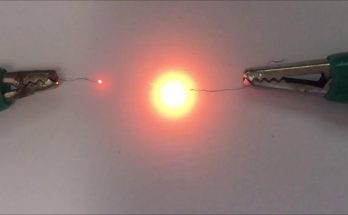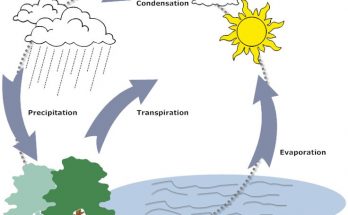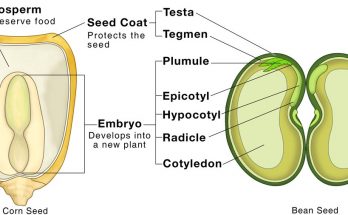MULTIPLE CHOICE QUESTIONS (MCQ’S):
Without the nervous system you cannot:
- See
- Hear
- Taste
- All of these
Which of these is not part of the brain?
- Cerebrum
- Spinal cord
- Medulla
- Cerebellum
Which part of your brain helps in balancing your body and helps in coordinating all your
muscles?
- Cerebrum
- Medulla
- Cerebellum
- Spinal cord
Which sense organ differentiates between sizes of objects?
- Tongue
- Ears
- Eyes
- Nose
Which of these actions would not be prompted by the brain?
- Peeling a banana before eating
- Sketching
- Dodging a stone coming your way
- Answering a question
Our nervous system consists of the brain, the spinal cord and the
- blood vessels
- kidney
- lungs
- nerves
A person might faint if his heart does not send enough blood to his
- Feet.
- House
- kidneys
- brain.
When we happen to touch a hot object, the sensory nerve immediately passes a message to the
- Brain
- hands
- spinal cord
- eyes.
To clean a blocked nose we must inhale
- perfume
- steam
- ice
- none of the above
The control center of the human body is
- heart
- brain
- liver
- kidney
The most important system in our body is
- Circulatory System
- Nervous System
- Skeletal System
- Excretory System
Nervous System is made of special cells called
- skeletal
- cardiac
- neurons
- Smooth
The weight of brain is about
- 0.5 kilogram
- 1.5 kilograms
- 1 kilogram
- 2 kilograms
The big brain is called
- Cerebellum
- Cerebrum
- Medulla
- Spinal Cord
You should read in a proper light of
- 200 watt bulb
- 100 watt bulb
- 40 watt bulb
- 30 watt bulb
The number of sense organs in human body is
- 3
- 7
- 4
- 5
Sensory nerves carry impulses from
- brain to sense organs
- sense organs to brain
- stomach to brain
- periphery to center
Reflex action is a reaction.
- autonomous
- automatic
- mechanized
- involuntary
Heartbeat is controlled by
- The Spinal Cord
- The Medulla
- The Cerebellum
- The Cerebrum
FILL IN THE BLANKS:
- The main thinking part of brain is cerebrum
- Dendrites and axons are a part of neuron.
- Center of heat, touch, pressure is parietal lobe of brain
- Medulla controls involuntary activities like sneezing and coughing.
- Blind spot in the human eye is found at the junction of the optic nerve and retina.
- Brain is a painless organ, so it will not be hurt when pricked with a needle.
- Medulla oblongata controls the heartbeat.
- In reflex action , the reflex arc is formed by the receptor–spinal cord–muscle.
- The cerebellum is concerned with coordination of muscle movement.
- The number of spinal nerves in the human body is 31 pairs.
- Parkinson’s disease affects the brain.
- Iris controls the size of the pupil.
- The brain is protected by the skull and the spinal cord by the vertebral column.
- The sensation of pain will be carried from the skin to the brain by the sensory nerves.
- The portion of the eye that has cells sensitive to light and color is retina.
- The part of the eye on which the image is formed, is the retina.
Write the functions of these parts of your body :
- Cerebrum – Thinking
- Pupil – Light enters the eye
- Eardrum – Vibrates when sound falls on it
- Medulla – Involuntary actions
- Cerebellum– Balance and movements
- spinal cord- Reflex action
Unscramble the letters to find the words related to your nervous system, put them in the right order and make a flowchart to show how the system works:
- rainb 2. svenrou ysstme 3. venrse 4. umslec 5. ensryso ernve 6. omtor erenv 7. napils ocrd
Ans: 1. Brain 2. Nervous system 3.nerves 4.muscle 5.sensory nerve 6. Motor nerve 7.spinal cord
Flowchart:
Nervous system- nerves-sensory nerve-spinal cord- brain-motor nerve-muscle
Answer the Following Questions:
What is the main function of Brain ?
Ans: The brain is an organ that’s made up of a large mass of nerve tissue that’s protected within the skull. It plays a role in just about every major body system.
Some of its main functions include:
- processing sensory information
- regulating blood pressure and breathing
- releasing hormones
Also Check – Bones And Muscles / The Skeletal System – Class 5 – Notes
2. Name the different parts of the brain and describe their main functions.
Ans: The brain is divisible into three main regions:
- Forebrain (Prosencephalon)is the anterior part of brain which consists mainly of cerebrum.
- Midbrain (Mesencephalon)
- Hindbrain (Rhombencephalon)It is the posterior most part of the brain which consists of cerebellum, pons varolii and medulla oblongata.
Cerebrum:
- It is the largest and uppermost part of the brain occupying about 80% of the brain.
- The cerebrum consists of the cerebral hemispheres and accounts for two-thirds of the total weight of the brain.
Function: One hemisphere, usually the left, is functionally dominant, controlling language and speech. The other hemisphere interprets visual and spatial information.
Cerebellum:
- The cerebellum (which is Latin for “little brain”) is a major structure of the hindbrain that is located near the brainstem.
- Although the cerebellum only account for roughly 10% of the brain’s total weight, this area is thought to contain more neurons (nerve cells) than the rest of the brain combined.
Function:
- This part of the brain is responsible for coordinating voluntary movements.
- It is also responsible for a number of functions including motor skills such as balance, coordination, and posture.
Brainstem:
- It is located at the base of the brain.
- This area connects the cerebrum and the cerebellum to the spinal cord, acting as a relay station for these areas.
Function:The brainstem works by regulating automatic functions such as sleep cycles, breathing, body temperature, digestion, coughing, and sneezing.
3. Name the different types of nerves and explain their functions.
Ans: There are three types of nerves
- sensory nerves
- motor nerves
- mixed nerves.
Sensory nerves or afferent nerves:
- These are the nerves that send messages to the brain or the spinal cord from the sense organs.
- These are enclosed in the form of a bundle like structures or nerve fibres in the peripheral nervous system.
- They carry information from the PNS to the CNS( Central Nervous System).
- The brain studies the messages and tells you what your sense organs have seen, heard, tasted, smelt or felt.
Motor nerves or efferent nerves:
- Motor nerves are those nerves that carry the messages in the form of a response from the brain or the spinal cord to other parts of the body such as the muscles and glands.
- They are responsible for carrying the information from the CNS to the PNS.
- . If your sensory nerves report that your eyes have seen a stone about to hit you, the brain will immediately send a message through the motor nerves to your leg muscles to get out of the way.
Mixed nerves or relay nerves:
- Mixed nerves are the nerves that perform both the action of sensory nerves as well as a motor nerve.
- They carry messages between the sensory nerve cells and the motor nerve cells.
- Generally, the mixed nerves transmit impulses at the rate of 120 metres per second or 432 kilometres per hour.
- They are present in the brain and spinal cord. Read More Question Answers
True or false:
- The actions controlled by the spinal cord are called reflex actions. TRUE
- The part of the brain that controls our senses is called the cerebrum. TRUE
- The motor nerves bring messages from the sense organs to the brain or the spinal cord. FALSE
Correction: The motor nerves bring messages from the brain to sense organs.
4.The pupil is an opening in our eye through which light enters. TRUE
5.The ears enable us to keep our balance. TRUE
Complete the series:
- bundles of fibers : nerves : : taste buds : Papillae
- memory : cerebrum : : heartbeat : Medulla
- cerebellum : muscles : : cerebrum : Memory
- eyes : sight : : skin : Feel



